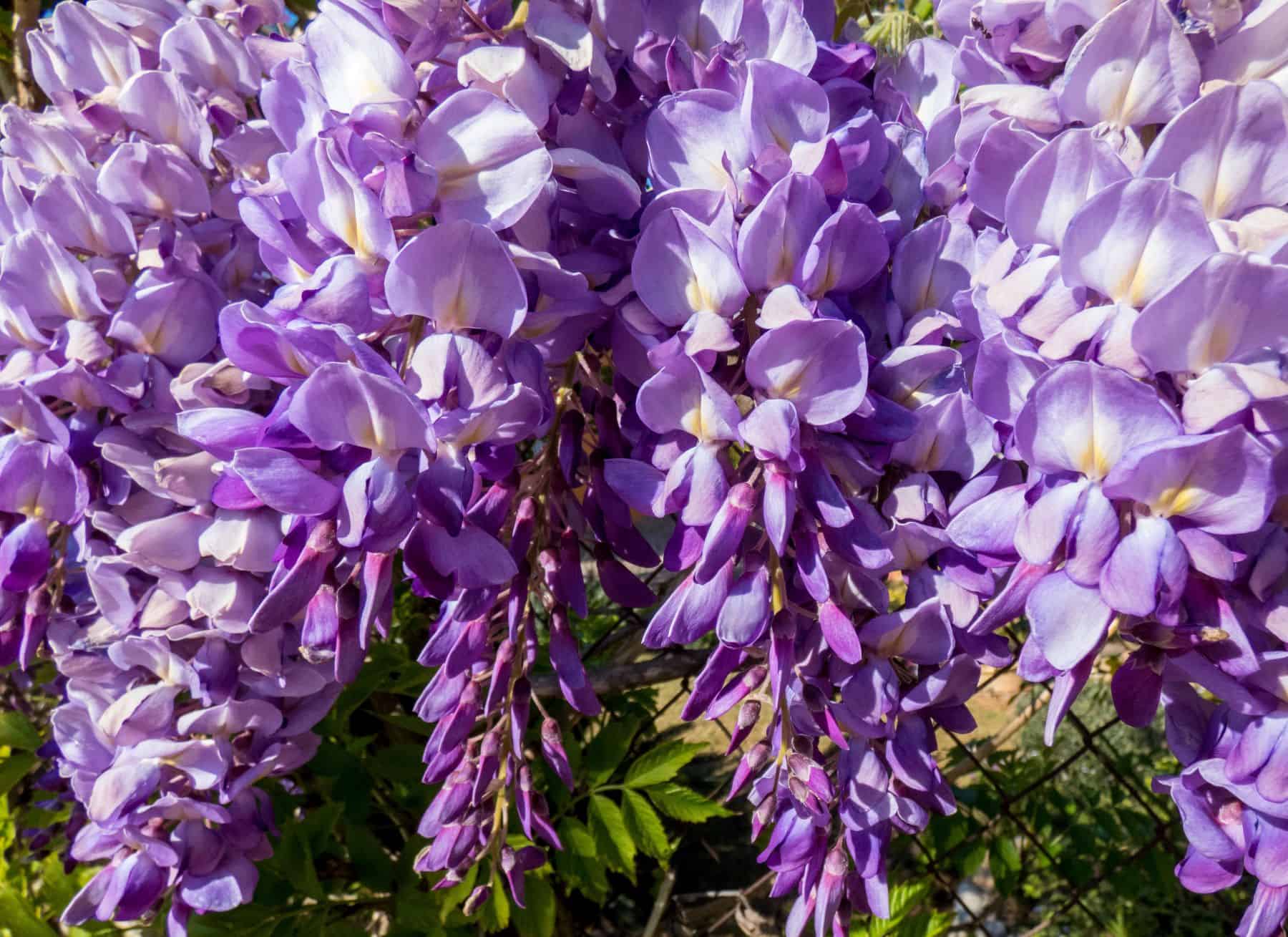
Flowering vines are a gardener’s secret weapon—especially when you run out of horizonal gardening space. If you have a small garden space and you still crave more plants, the answer is as simple as vertical gardening with flowering vines.
Even if you still have horizontal growing space, vines reaching heavenward add another dimension to your landscape. There’s something magical about a clear blue sky behind masses of white blooms on classic morning glory vine. Or, fluffy white clouds floating behind cascades of lavender-blue flowers on a blooming wisteria. Even misty rain filling the tubular orange flowers on trumpet vine can make you smile and feel good.
Flowering vines give a garden an appealing romantic look. They tease you to come hither and entangle your thoughts and emotions with them. They curl and wind their way around trellises and arbors and across the tops of fences. Some flowering vines even tantalize you with their sweet smells.
Most vines are heavy and demanding as they twist and take over their territory. So, give them plenty of space to roam, and provide them with sturdy structures to support their personalities. Any good balanced garden fertilizer keeps them happy and healthy. And most flowering vines need at least morning to early afternoon sun to fully bloom.
Here are some of the best perennial and annual vines to consider for your next gardening adventure.
Nature Hills Nursery sells a wide variety of flowering vines for vertical gardening. These include many varieties of clematis, wisteria, trumpet vines and more.
Check availability and prices.
Best Flowering Vines: Clematis
Many varieties of clematis feature big, bold blossoms (Clematis spp.). But landscape designer Tami Eilers says varieties that produce smaller flowers tend to bear more buds and carry their color longer. One of her favorites is the 1885-bred Etoile Violette, with dark violet-purple flowers that appear in masses. It is available from SpringHillNursery.com.
“I enjoy mixing two perennial plant varieties to extend the bloom time, such as purple-blooming clematis and a climbing rose, allowing them to intertwine among each other,” says Eilers, who lives in Naples, Florida. “Clematis is an excellent, manageable perennial vine available in a huge variety of colors.”
In fact, clematis flowers can range from white, blue, magenta, pink—and virtually all colors in between. Some of the most striking clematis blossoms feature multiple colors, such as purple petals and yellow centers, or white petals kissed with magenta.
Eilers suggests growing clematis vines on a mailbox post or smaller trellis, give them a little water and watch them go! See her landscape ideas at diydesigneye.com.
Clematis Fragrance
Southeastern Virginia landscaper Eric Bailey prefers Clematis armandii for its long, narrow leaf that grows in sun and even a fair amount of shade. In spring, it’s covered in clouds of small fragrant flowers.
“The fragrance has almost a slight vanilla scent,” says Bailey, whose designs are featured at www.landscapesbyeb.com. “It is my favorite.”
For fall interest, think Sweet Autumn clematis, which is hardy throughout the country in USDA zones 5-9. Its tiny white flowers and big, sweet smell can be found along America’s highways and at garden centers.
Despite its daintiness, Sweet Autumn clematis is prolific and strong. Give it sturdy support like a wooden fence or big tree trunk to climb on. For more information about growing clematis, read Debunking Clematis Myths.
Superstar Annual: Morning Glory
One of the best flowering vines among annual plants is the morning glory. Seed lovers such as Tami Eilers like propagating morning glory (Ipomoea spp.) from seed. The seeds can be purchased at garden centers, or seeds can be harvested from the previous year’s vines. You can also just wait for the many baby plants that volunteer from the seeds that naturally scatter.
“Plant them if you really love them, because they will seed themselves forever in the future,” adds Eric.
The vines are also useful for adding quick color to your yard. “The morning blooming varieties with their beautiful blue and sometimes pink colors are a nice addition to a picket fence planted next to pink flowering roses,” said Eilers.
Another favorite is the fragrant white moon vine that blooms at night, which is a cousin to the morning glory. The flowers attract nocturnal hummingbird moths at dusk that are a delight to watch.
Flowering Trumpet Vines for Large Spaces
The first rule for growing trumpet vine (Campsis radicans) is this: have plenty of room for this deciduous woody native vine to grow. This plant is best grown on a sturdy structure such as a garden shed, pergola or fence. Beware—it can get so large that it can harm siding on a house.
But keep this stunning vine pruned and under control, and it can create a beautiful cottage look. Its lacy foliage is attractive, and the orange, trumpet-shaped orange flowers attract hummingbirds by the dozens.
It’s no surprise that the popular nickname for trumpet vine is “hummingbird vine” and if you like native plants, this one is for you. A bonus is the vine’s late-summer bloom time. When other color in your yard looks tired and faded from summer’s heat, trumpet vine shines.
Wisteria: Another of the Best Flowering Vines
Wisteria (Wisteria spp.) is a showy, fragrant flowering beauty that immediately captures your eye and heart. It also commands respect for its impressive size and weight.
Amethyst Falls, the native American version of this vivacious vine, is smaller and a bit better behaved. It grows in USDA zones 5-9, and it is drought resistant. Deer tend to ignore it, but butterflies flock to its purple flower clusters.
In the wild, American wisteria (Wisteria frutescens) can be seen in coastal swamp forests, alongside streams and in woodland edges. It can be found from southeast Virginia, Florida, and Alabama, according to the Virginia Native Plant Society. The vine is the larval host for eye-catching butterflies, including long-tailed and silver-spotted skippers. It is also a nectar food for adult butterflies.
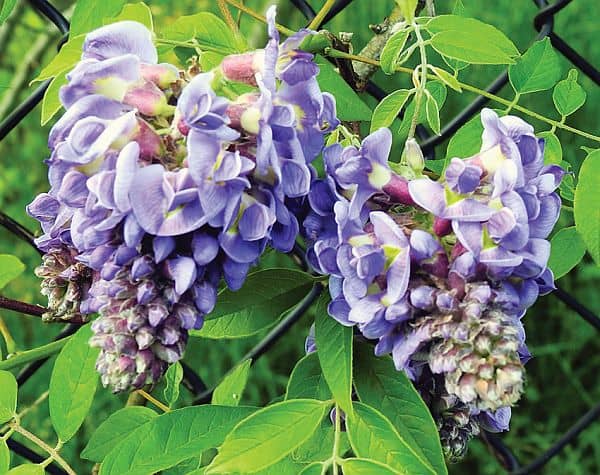
Wisteria blooms only on new growth, so it is best to prune at least half of the prior year’s growth in late summer, according to Tami Eilers. “I particularly like wisteria crawling along a fence or on a sturdy pergola, but not near a house structure” she says. “This is my favorite vine to add to a design any time a romantic setting is desired.”
A Personal Favorite Flowering Vine: Climbing Hydrangea
My woodland garden is filled with shrub-style hydrangeas, so any vine with the word “hydrangea” it gets my attention. That’s why climbing hydrangea (Hydrangea petiolaris) is among my favorite flowering vines for vertical gardening. “Moonlight” climbing hydrangea is my favorite with its silvery, blue-green heart-shaped leaves that turn yellow in fall.
But you must be patient with its blooms. They start out slowly and increase as the plant matures. I also had to give it a little help attaching itself to a tree. Training it to climb was well worth the effort. I love the shimmering elegance this plant adds to my garden.
An Annual Vine to Love
Love-in-a-puff (Cardiospermum halicacabum) might be the cutest and easiest annual vine I’ve ever grown. Plus, this vine is a great choice for growing in a kid’s garden. Kids love planting the black seeds marked by a perfect white heart.
Once the delicate love-in-a-puff white flowers fade, light green puffy capsules appear on the rambling vine. Inside the “puff” are more seeds for next year’s crop of new plants. This vine is lightweight and needs no sturdy structure. In fact, I let it play up the trunk and stems of a small dogwood tree, and it looks great.
Purple Seed Pods on a Purple Flowering Vine
A visit to Thomas Jefferson’s Monticello home in Virginia turned me on to this wonderful annual flowering vine. Purple hyacinth bean (Dolichos lablab) grows quickly, scampering along the ground or up a garden trellis.
In a large perennial garden, I let it curl and twine its way up a 4-by-4 post that supported a birdhouse. The purple foliage is striking enough. But then you get long spikes of purple-lavender blossoms that bring hummingbirds. Bright purple seed pods are attractive until frost comes. Then, the pods provide seed for next year’s show. There is a white version of this plant, too.
A Flowering Vine to be Passionate About
In Virginia (where I live), Passionflower (Passiflora incarnta) is a native vine that loves wide open fields. This tropical-looking vine is also widely sold at garden centers. It’s an aggressive and invasive vine that pops up here and there, and I learned the hard way to plant it in pots.
Nonetheless, passionflower is worth the trouble. This species has 3-inch lavender flowers have a fine fringe of wavy, hair-like segments that are banded with purple. This is a great plant for a pollinator garden because large bees are attracted to its unique arrangement of three styles extending from the ovary in the center of each flower. Just be vigilant to keep its roots from going rogue.
More Vines, and Final Thoughts
In addition to all these vivacious vines, there are many others to consider. Tropical treats such Bougainvillea and Mandevilla are fun to grow. So are regal climbing roses such as yellow Lady Banks. And don’t forget about dainty delights like Carolina jasmine and black-eyed Susan vine.
If you would like to find out more about how to grow flowering vines and vertical gardening, be sure to read How to Fertilize Clematis and Other Flowering Plants.
While you plan your vertical garden, remember the old saying: Vines sleep, creep and then leap. They are full of surprises, rewarding you with some of the best fun in the garden because they know no boundaries.


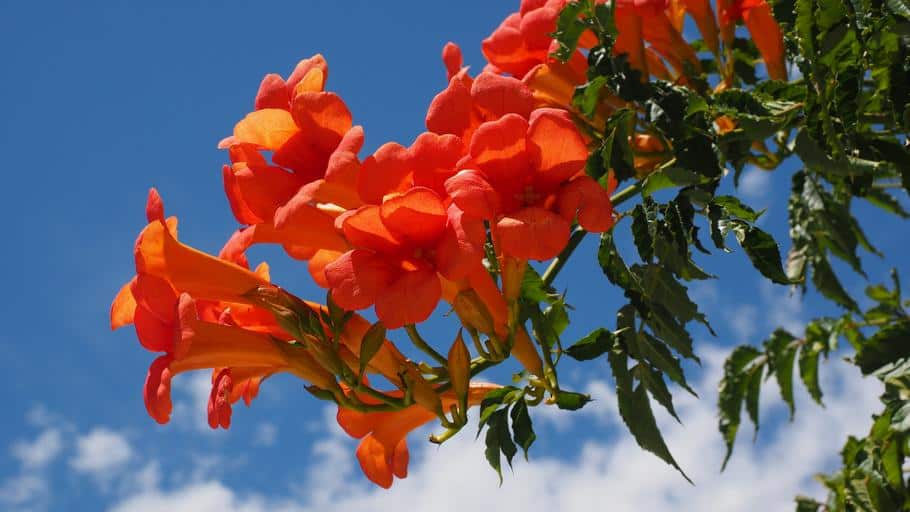

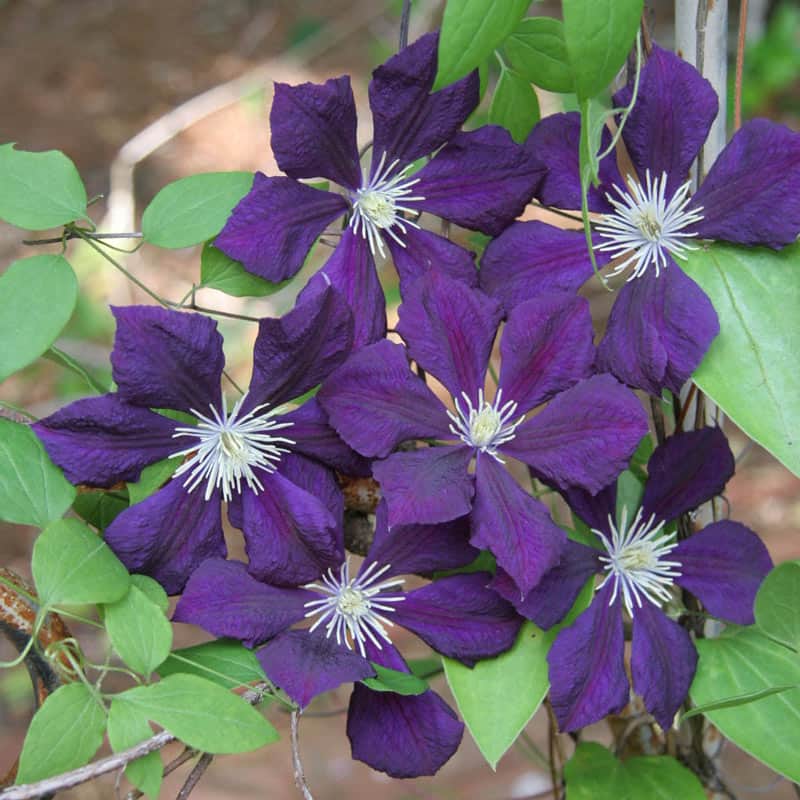
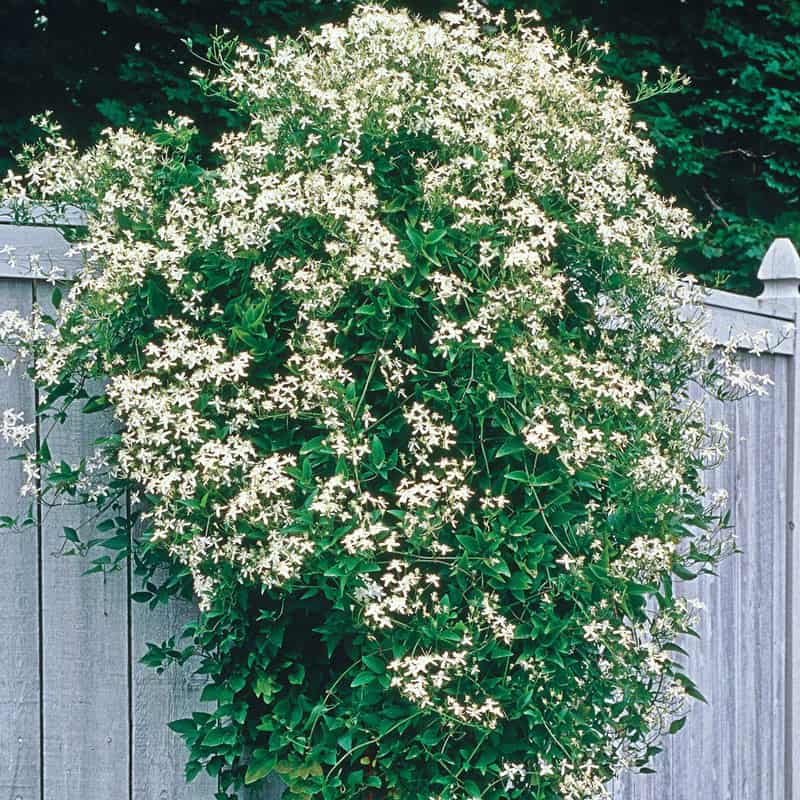
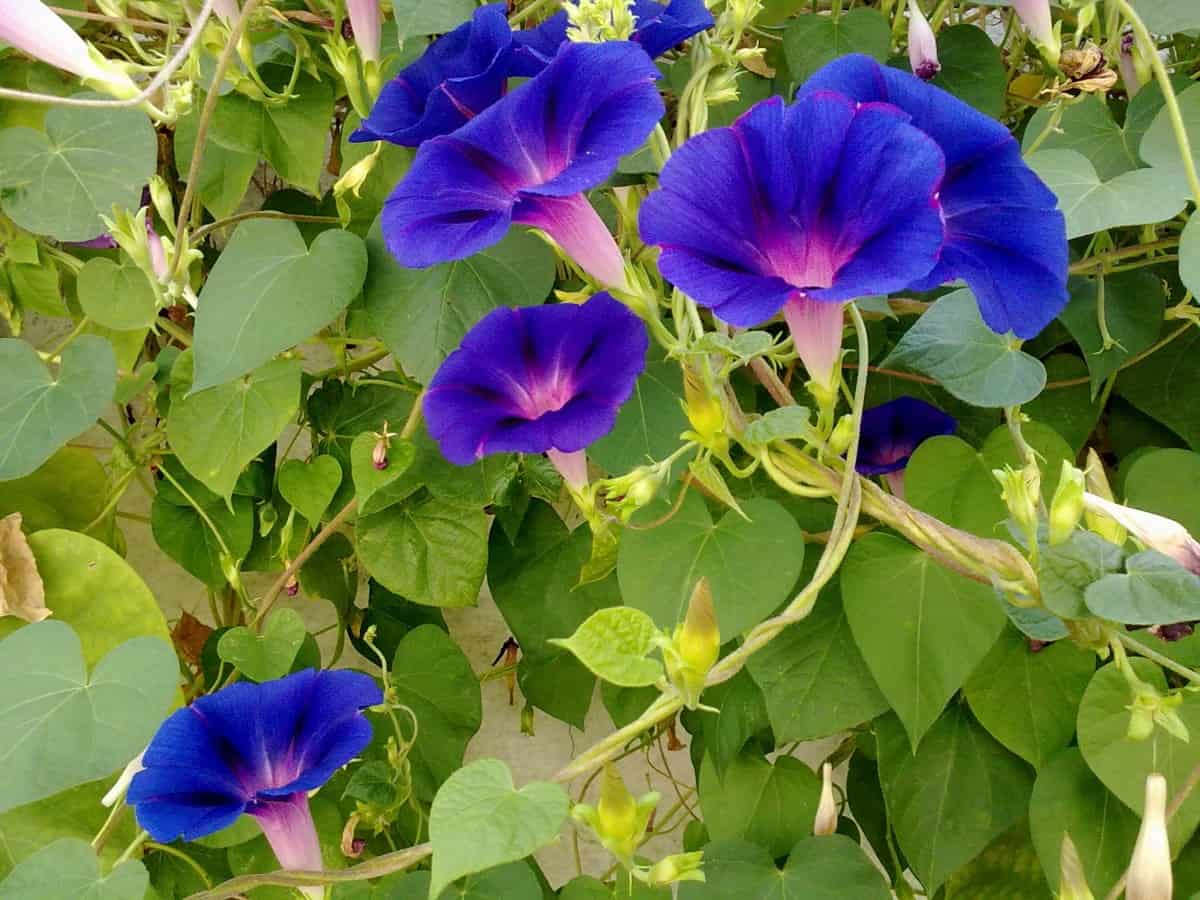
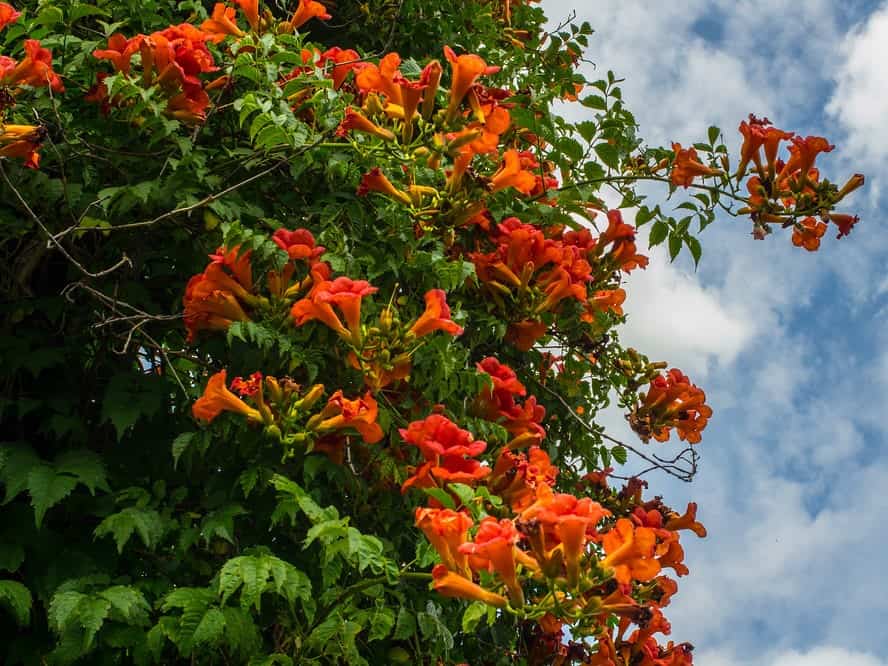
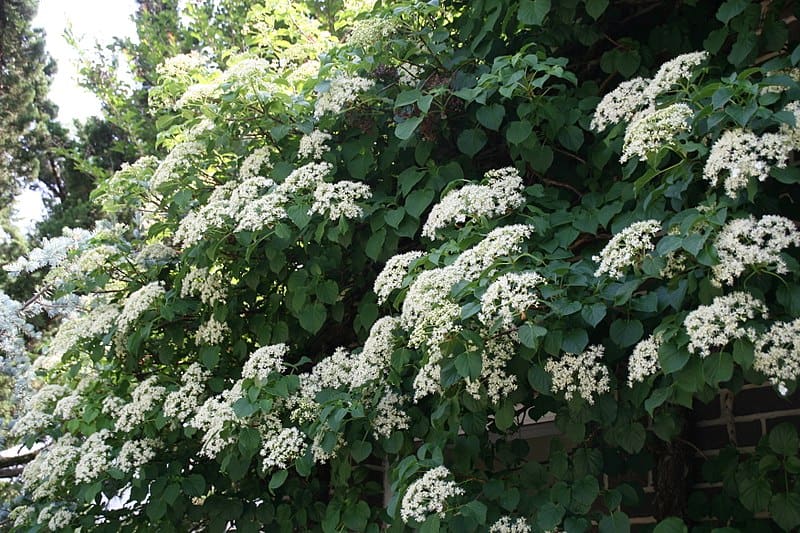
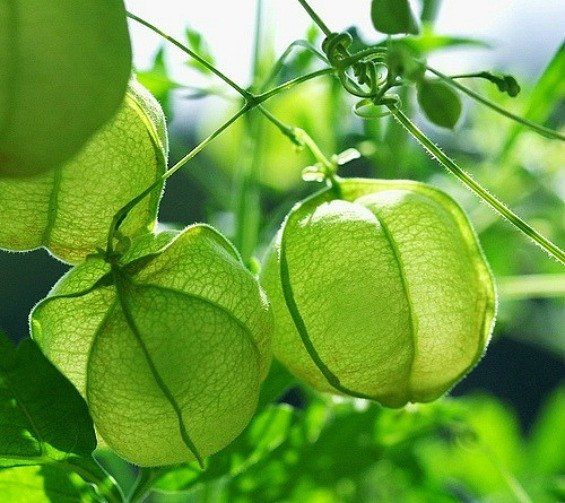
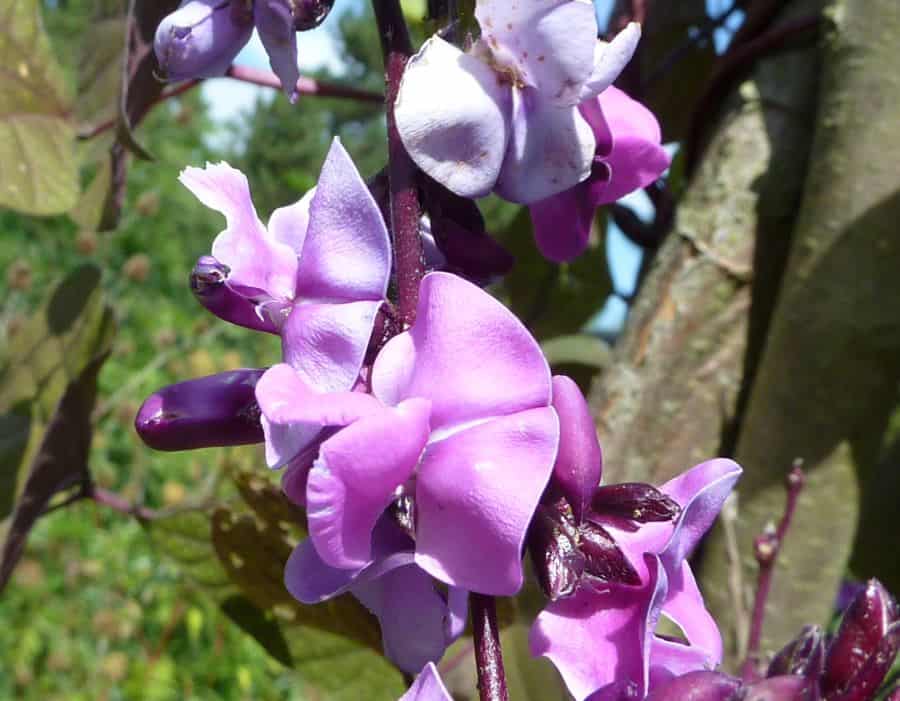
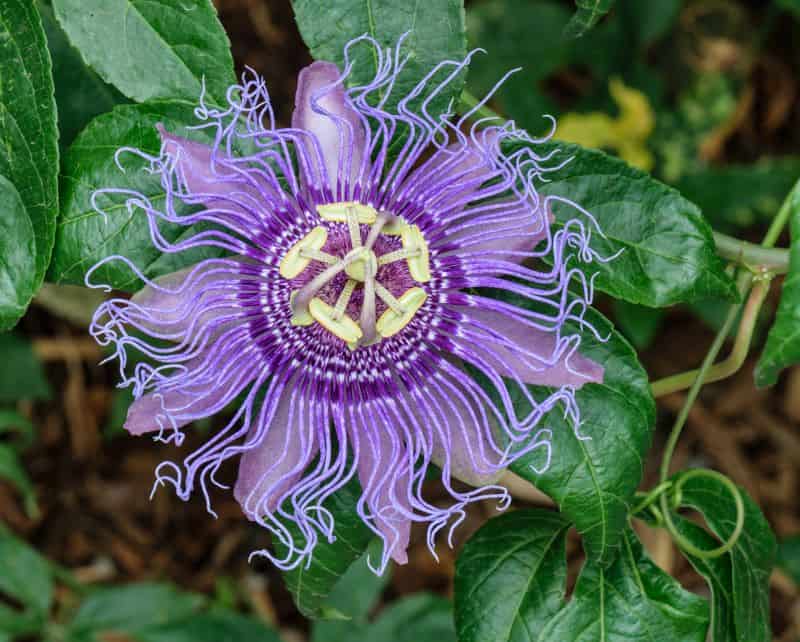

Leave a Reply